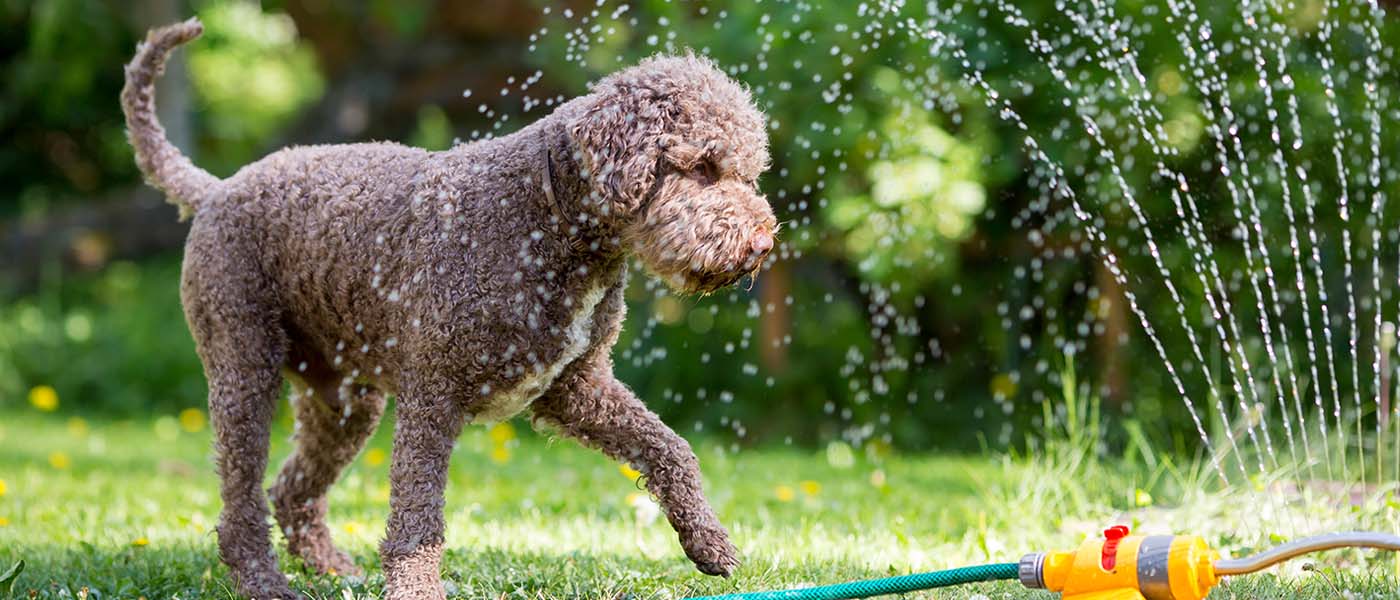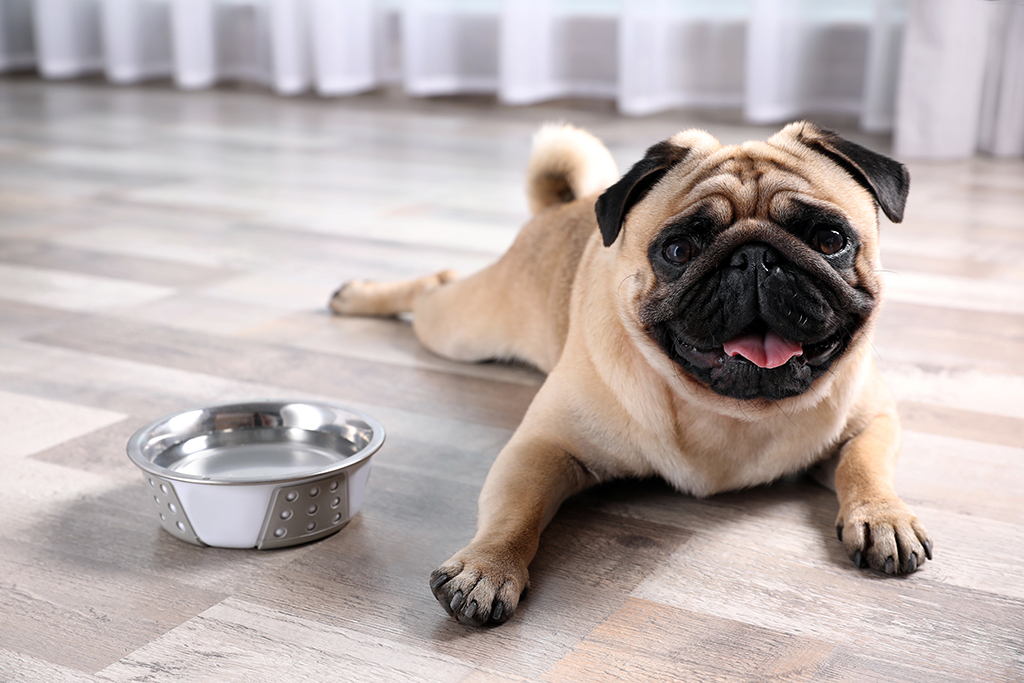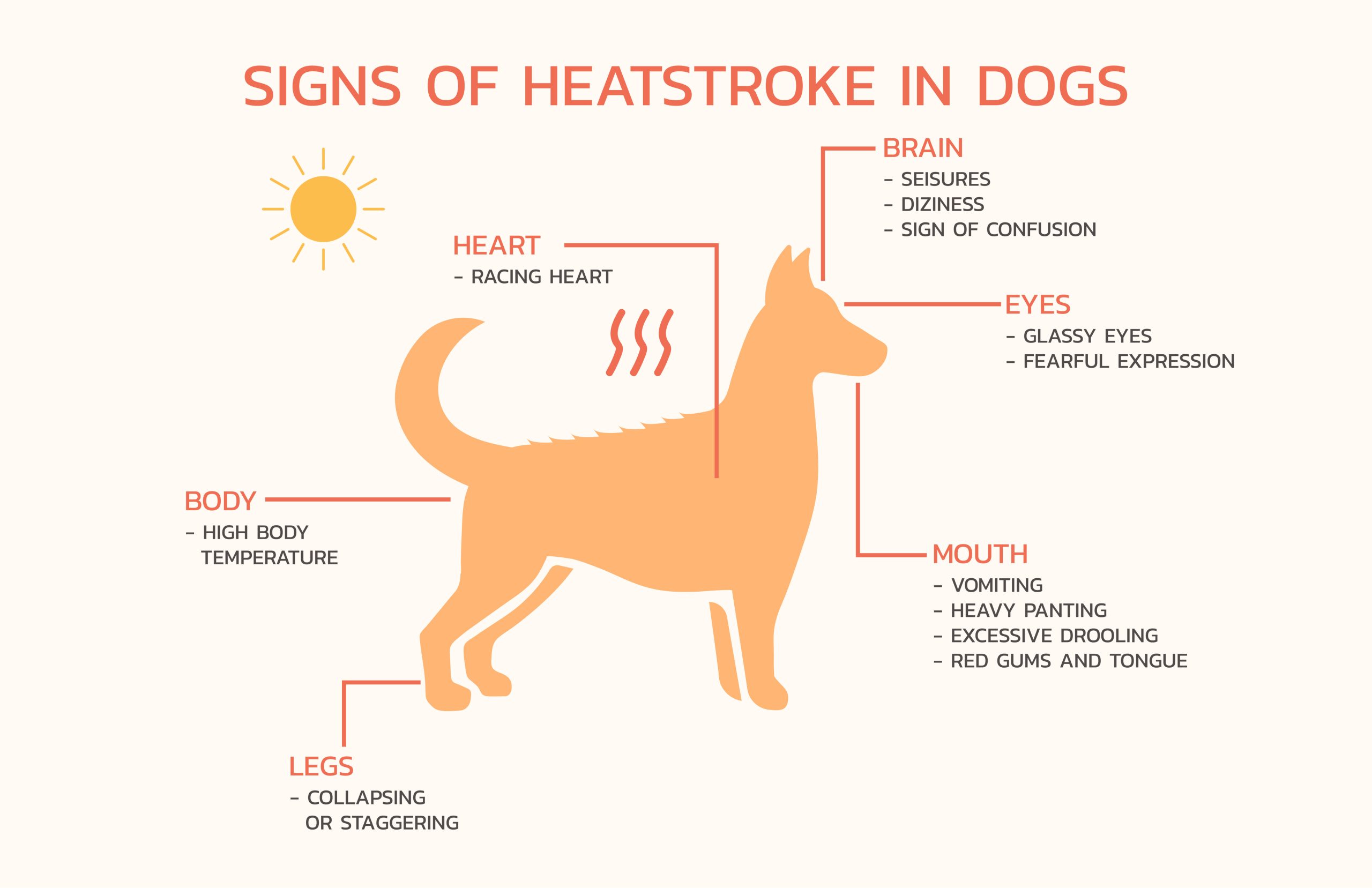
As summer approaches, many of us are making plans to enjoy the warmer weather but rising temperatures can pose serious risks to our pets. Unlike humans, pets – especially dogs and cats – struggle to regulate their body temperature. They cool down primarily through panting and minimal sweating via their paw pads, making them vulnerable to overheating and heatstroke. Providing shade and water, as well as avoiding hot surfaces and hot cars, and protecting from sunburn can make all the difference to how well your pet enjoys summer.
To help you keep your pets safe from the summer heat, we have put together these important summer pet safety tips:
Why is shade important for pets in summer?
Our pets should be able to move to a cooler place so they can escape the heat when they need to. It doesn’t take much for an animal to overheat – especially smaller species like birds and rabbits. You can create shaded areas using trees, umbrellas, or tarps. Be mindful of pets that are locked up in runs or cages that end up in the sun. If possible, bring pets indoors during the hottest parts of the day (typically 10am–4pm).
How much water should pets drink in summer?
Always provide access to fresh, clean water. Regularly check water hasn’t evaporated or become too warm. Also, place multiple bowls around your home and garden, especially for outdoor pets, so that if one water bowl dries up or gets knocked over, your pet still has access to water when home alone.
If you’re taking your dog out for a walk in the bush or a run at the beach, take along a collapsible drinking bowl so you can fill it up with water you have brought along or from a drinking fountain.
Can pets get heatstroke in cars?
Yes! Even on mild days, car interiors can reach dangerous temperatures within minutes. For example, on 20°C day, the inside of a car can be as warm as 37°C. On a hot 30°C day in mid-summer, your car can absorb so much heat that the temperature inside is as high as 60°C.
Leaving pets in vehicles – even with windows cracked or air conditioning running – is never safe. A cracked window, open sunroof, and even parking in the shade on a hot day is not enough to prevent heatstroke in our pets.
Panting is a dog’s way to dump its excess heat out into the environment. If the body temperature stays high for long enough, every organ and every tissue is affected. If the damage is too widespread, the pet will die.
Although cats are not as frequent car companions, all pets are at risk in hot cars. Brachycephalic or “short nosed” breeds (e.g. Pekinese, Bull dogs and Persian cats) are especially at risk. Since their noses and upper airways are so short, they can’t exchange heat the way dogs with longer snouts can.
Can pets get sunburnt?
Dogs and cats with pale skin or limited fur on their noses and ears are susceptible to sunburn, which can lead to skin cancer. This is another reason to ensure they’re out of the simmering hot sun during the middle of the day. Use vet-approved pet sunscreen on exposed areas like the nose, ears, and belly during the warmer months when UV rays are at their strongest. Always consult your vet before applying any product.
Can pets burn their paws on paths and pavements?
Absolutely. Those of us who like to walk barefoot in summer know how hot concrete can get! If you’re walking your dog on a hot day, take care of burning hot surfaces and always try to walk them on grass rather than concrete. Test the pavement with your hand before walking your pets outside. If it’s too hot to touch, it’s too hot for paws. Choose grassy or shaded paths instead.
Also, be careful transporting dogs on ute trays in summer because the tray surface can get very hot and burn their feet.

Certain factors increase the risk of heat-related illness in pets:

Symptoms include:
If you suspect heatstroke, move your pet to a cooler area, offer small amounts of water, and gently cool them with wet towels. Seek veterinary care immediately.
Swimming can be a refreshing way for pets to cool off, but not all animals are natural swimmers. Always supervise them around pools, lakes, and beaches, and consider a pet life jacket for added safety.
To help pets stay comfortable during hot days, cooling products such as mats, vests, and bandanas can be effective, especially for dogs engaged in outdoor activities.
Regular grooming also plays a role in temperature regulation – brushing out excess fur improves airflow, while avoiding shaving long-haired breeds helps preserve their natural sun protection.
Additionally, summer brings increased insect activity, so ensure your pet is protected with vet-recommended flea, tick, and mosquito prevention, and check regularly for signs of bites or infestations.
Summer can be a joyful season for you and your pets with the right precautions. By understanding the risks and following these tips, you’ll help protect your companions from heat-related issues and ensure they enjoy a safe, fun, and healthy summer. Our pets really are completely reliant on us for their safety and protection. That’s why it’s so important to adapt your pet parenting techniques for summer. Feel free to reach out to us at Vetlife if you have any questions!